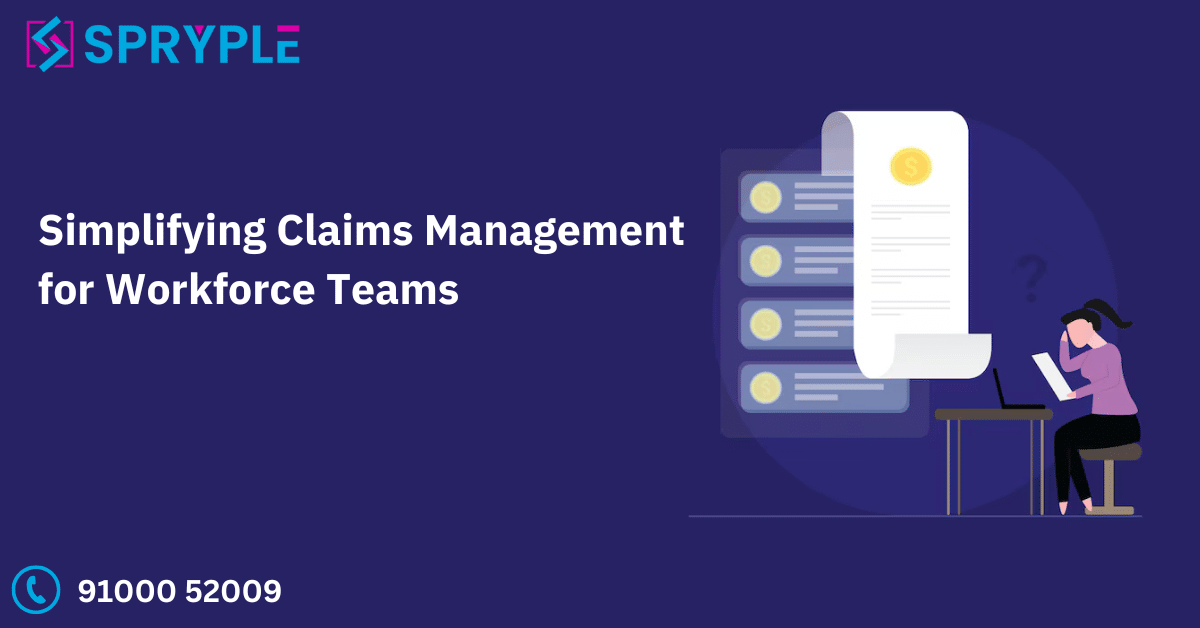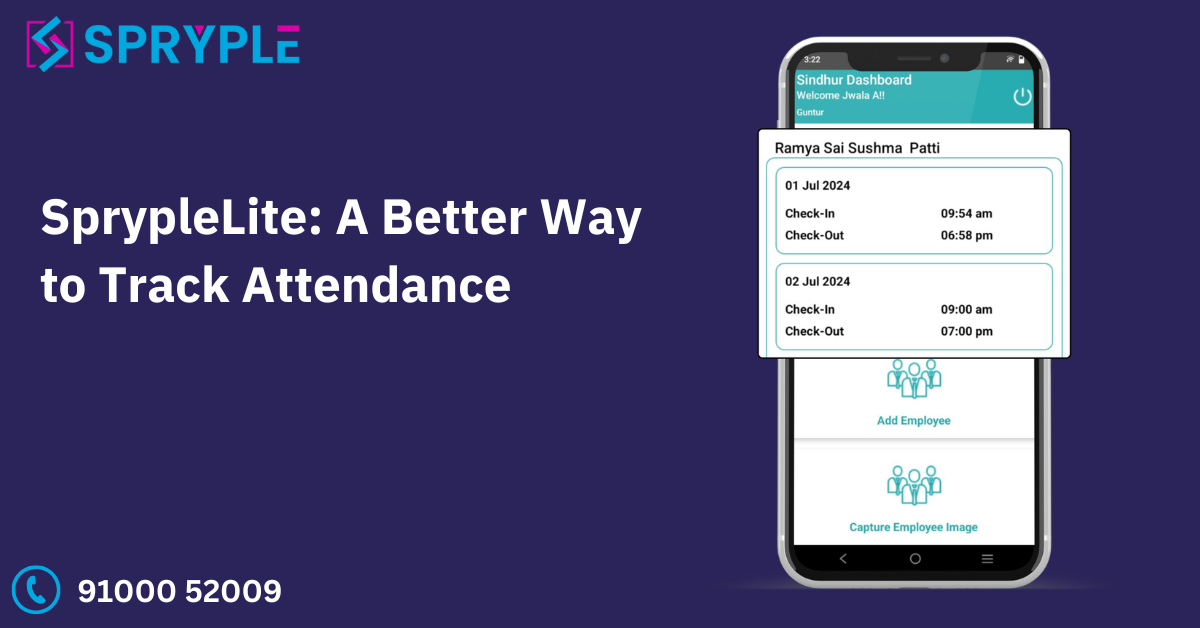
Time and Attendance Software for Hospital and Healthcare Industry

Importance of Time and Attendance Management Software for Healthcare Industry
Midnight at Metro General. Exhausted nurses grabbing coffee between rounds. An overworked ER doc finally heading home after a 12-hour shift. The night shift supervisor scrambling to find coverage because three staff called out sick.
Just another night in healthcare, where lifesaving is more important than cost savings.
Look, let’s talk about what actually happens in hospitals. Not the fancy sales pitch about automated systems – the real deal. The night supervisor who’s drinking their fourth coffee while trying to find someone, anyone, to cover the floor. The burnt-out scheduler who’s got 500 staff to manage and a paper calendar that looks like a preschooler’s art project.
Been there? Yeah, thought so.
The Truth: hospitals are a mess when it comes to staff scheduling. Sure, everyone pretends it’s under control, but we all know better. That nurse who just worked a double because nobody else could come in. That doctor covering two departments because scheduling got messed up. The poor HR team drowning in overtime calculations and compliance paperwork?
This isn’t working anymore.
Hospitals aren’t factories. You can’t just plug people into slots and call it a day. That ICU nurse can’t magically appear in paediatrics. That cardiologist can’t suddenly become an orthopaedic surgeon. And guess what? When scheduling goes wrong, it’s not just an inconvenience – it’s potentially life or death.
Modern time and attendance tech isn’t just nice to have anymore. It’s what keeps your staff from burning out. It’s what makes sure there’s actually someone qualified to help when that trauma case rolls in at 3 AM. It’s the difference between “we’re covered” and “pray nobody else calls in sick.”
Bottom line? Healthcare staffing is broken. We can keep pretending those paper schedules and endless phone calls are fine, or we can get real about fixing it. Because at the end of the day, this isn’t about schedules – it’s about saving lives.
What is Hospital Time and Attendance Software?
Hospital time and attendance software is basically your digital saviour from this mess. But here’s the real talk – it’s not just some fancy punch-in, punch-out system. That might work for a retail store, but hospitals? Come on.
Picture this instead: A nurse swipes their badge at 6:58 AM. The system knows they’re here for the 7 AM shift in the cardiac unit. It automatically checks if they’re qualified for that unit (because let’s face it, nobody has time to manually verify credentials every shift). Meanwhile, upstairs, a charge nurse can see exactly who’s coming on shift, who’s running late, and who called out – all from their phone or tablet. No more running around the unit trying to figure out who actually showed up.
But wait, there’s more chaos it handles. Remember those nightmare scenarios with shift differentials? Night shift, weekend rates, holiday pay, overtime when someone stays late because their relief got stuck in traffic? The software sorts all that out. No more calculator-and-prayer method of figuring out payroll.
The beauty of this thing? It actually understands how hospitals work. Multiple departments, rotating shifts, on-call schedules, last-minute coverage needs – it handles the mess that makes hospital staffing different from every other industry.
Challenges in Hospital Workforce Management: The Ugly Truth
Let’s get real about what’s happening on hospital floors right now.
The Shift Show Nightmare
Ever tried explaining hospital shifts to someone outside healthcare? They look at you like you’re speaking alien. 7A to 7P, 7P to 7A, four-on-three-off, night rotation, swing shifts, on-call backups… and that’s just for one department.
Try this fun game: schedule three units worth of nurses when half your night shift staff wants the same weekend off. Oh, and make sure you maintain proper nurse-to-patient ratios. Sound impossible? Welcome to every scheduler’s daily headache.
When Everything Hits the Fan
Monday, 2 PM. Three traumas roll in. A bus accident. The ER’s swamped. You need extra hands NOW. But wait – your staff already maxed out on hours, two called in sick, and that flu going around just took out half of med-surg.
This isn’t your average “can someone cover a shift” scenario. This is “find qualified staff in the next 15 minutes or things get really bad” territory. And it happens Every. Single. Day.
The Department Demands
Let’s see… ED needs 24/7 coverage. Surgery’s got cases running late. Lab techs are short-staffed. Radiology’s backed up. Each area needs specific certifications, different shift patterns, unique break coverage.
And don’t forget – you can’t just move people around like chess pieces. That fantastic ICU nurse? Can’t help in paediatrics. That experienced ER doc? Doesn’t have privileges in cardiac. Each department’s its own world with its own rules.
The Compliance Chaos
Here’s a horror story: The labour board shows up. They want to see proof that every nurse got their required breaks for the past three months. They’re checking overtime documentation. Oh, and Joint Commission wants staffing ratio reports.
Meanwhile, you’re digging through paper trails, praying someone didn’t “forget” to log a shift change. One missing document, one messed-up timecard, and suddenly you’re writing explanations nobody wants to write.
And let’s talk overtime – because someone has to track when that 12-hour shift turned into 14 because report ran long. Miss that calculation and watch your labor costs explode. Get it wrong too many times and say hello to audits.
This isn’t even the full mess. Ask any hospital administrator about their staffing nightmares, and they’ll talk your ear off for hours. The real question isn’t whether these challenges exist – it’s how we’re still managing to keep hospitals running despite them.
Sound familiar? Because if you’re in healthcare, you’re probably nodding along and adding your own war stories to the list.
Benefits of Hospital Time and Attendance Management System: Real Talk, Real Results

Remember that old saying about throwing spaghetti at the wall? That’s basically how most hospitals handled scheduling before decent systems came along. Let’s cut through the sales pitch and talk about what actually changes when you get this right.
Streamlined Shift Management to Manage Staff Better - No More Shift Tetris
Gone are the days of the infamous whiteboard covered in sticky notes and crossed-out names. You know the one – looks like a conspiracy theory wall by the end of the week?
Now imagine this: The system knows Dr. K can’t work Thursdays, Nurse J needs every other weekend off for shared custody, and the new grad needs an experienced preceptor on shift. One click – boom. Schedule built. No more “oops, we double-booked the only trauma surgeon” moments, simply achieve the excellence in operational efficiency.
Accurate Attendance Tracking - Catching Ghost Workers
Remember playing “who actually showed up for work today?” Fun game, right? Not anymore.
These new systems are like having a really efficient bouncer at the door. Biometric scans, face recognition, real-time data – no more buddy punching, no more “I swear I was here” debates. When someone’s here, they’re here. When they’re not… well, good luck explaining that to the system.
Improved Payroll Accuracy - The Payroll Peace of Mind
Here’s a beautiful thing: overtime gets calculated right. Every time.
No more Sunday night panic attacks trying to figure out who worked extra during the full moon rush. No more horrified looks when someone realizes holiday differential didn’t get added. The system tracks it all – regular hours, overtime, double time, holiday pay, shift differentials. Payroll actually matches reality. What a concept!
Real-Time Insights and Analytics - Numbers That Actually Mean Something
Want to know why the ED is always short-staffed on Tuesdays? There’s a report for that. Need to prove you need more weekend coverage? The time and attendance data is right there.
This isn’t just number-crunching for fun – it’s ammunition for making real changes. When the CEO asks why you need three more nurses, you’ve got more than just dark circles under your eyes as evidence.
Enhanced Productivity - Giving Time Back to People Who Need It
Think about your HR team. Remember when they spent half their lives manually checking timesheets? Now they’re actually doing HR stuff – you know, helping employees, improving workplace culture, recruiting top talent.
And those unit managers? They’re back to managing units instead of playing phone tag trying to fill gaps. Turns out when you’re not spending four hours a day on scheduling, you can actually focus on patient care. Who knew?
The best part? This isn’t fantasy. This is what happens when hospitals finally ditch the stone age tools and embrace systems that understand healthcare. No more “making do” – just staff where they need to be, getting paid what they should, while administrators actually get to sleep at night.
Sounds too good to be true? Ask any hospital that’s made the switch. Just be ready for some emotional responses – usually involving phrases like “life-changing” and “why didn’t we do this sooner?”
Key Features of Healthcare Time and Attendance Software: The Stuff That Actually Matters

Let’s break down what you actually get – no fancy brochure talk, just the real features that make a difference on the hospital floor.
AI-Based Attendance to Track Time Accurately - No More Badge-Swapping Games
Gone are the days of “my friend clocked me in.” These new systems use face recognition or fingerprints that actually work (unlike that ancient time clock that wouldn’t recognize anyone after their 12-hour shift). You’re either there or you’re not – no grey areas.
Shift Scheduling and Time Tracking Alerts - Shift Alerts That Don't Drive You Crazy
Your phone buzzes. But instead of another “can anyone cover tonight?” group text, it’s an automated alert telling you exactly what you need to know. Employee shift changes, coverage gaps, overtime warnings – all in real-time, all making sense.
Geo-Fencing for Field Staff and GPS Tracking
Home health nurses, outpatient clinics, satellite facilities – healthcare doesn’t stop at the hospital doors. GPS tracking shows who’s where, when they arrived, and yes, if they made it to that home visit. No more guessing games.
Customizable Dashboards That Tell the Real Story
Want to know your worst staffing days? Your overtime hotspots? Which units are always running short? It’s all there, in plain English, with charts that actually make sense. No PhD in data science required.
Accessible on Mobile
Let’s be honest – nobody’s running to a time clock anymore. Clock in from your phone while you’re walking in. Check your schedule while grabbing coffee. Swap shifts during lunch. Welcome to scheduling that actually fits how people work.
Integration with Payroll
Remember reconciling time cards with payroll? No? That’s because the system handles it now. Every minute worked, every differential, every overtime hour – straight to payroll, no human calculator needed.
Automate Workflows and Attendance Policies
Request time off? Click. Need coverage? Click. Approve a shift swap? Click. No more paper trails, no more lost forms, no more “but I turned that in three weeks ago!”
Secured Access Controls, Approvals and Notifications
Because healthcare privacy is no joke. Different access levels for different roles. Want to see who viewed what? Got it. Need to restrict who can make schedule changes? Done. HIPAA compliance? Built right in.
Integrate with Other Hospital Systems

Your EMR system, HR platform, payroll software – they all need to talk to each other. Modern attendance systems plug right in. No more double entry, no more “this system says one thing, that system says another” headaches.
The bottom line? These aren’t just cool features – they’re solutions to real problems that have been driving healthcare workers nuts for years. And the best part? They actually work in the real world, not just in the sales pitch.
Want proof? Ask any charge nurse who doesn’t have to spend two hours a day chasing down coverage anymore. Or any HR director who finally got a full night’s sleep because payroll actually processed correctly. That’s the real test – and these features pass it.
Real-World Applications of Attendance Software for Healthcare: Where the Rubber Meets the Road
Let’s ditch theory and talk about what this looks like in real hospitals. No sugar coating – just the raw, real-world impact.
The ER Chaos Controller
Picture a Level 1 trauma centre, Saturday night. Mass casualty incident rolls in. Old system? Panic calls, manual staff counts, pure chaos. New reality? One glance shows who’s on shift, who’s available for emergency call-in, and who’s already maxed out on hours. Three taps on a screen and backup staff are notified. That’s the difference between scrambling and saving lives.
The ICU Staffing Safety Net
Critical care units can’t mess around with staffing ratios. Period. Got a nurse reaching their patient limit? System flags it automatically. Need to prove you maintained ratios during a surge? Pull up the report. Done. No more crossing fingers during compliance audits.
The Float Pool Fix
Remember the old float pool nightmare? Playing phone roulette trying to find someone qualified to cover L&D? Now unit managers see real-time who’s qualified, who’s available, and who’s already worked too many hours this week. No more putting staff in positions they’re not certified for because you’re desperate.
The Burnout Buster
We’ve all seen it – that one nurse who’s always “willing” to pick up extra shifts. Until they’re not. Because they’re burnt out. Modern systems track hours, flag excessive overtime, and help prevent staff burnout before it happens. It’s looking out for your people when they won’t look out for themselves.
The Budget Balancer
CFO breathing down your neck about overtime? Here’s exactly why Unit 3B needed those extra hours last month – complete with patient census data to back it up. No more defending necessary staffing decisions with gut feelings. Data tells the story.
The Clinic Coordinator
Outpatient clinics using paper schedules? Welcome to missed appointments and staffing gaps. Now? They can see no-show patterns, adjust staffing to patient volume, and keep wait times down. Happy patients, efficient staff, better care.
The Crisis Manager
COVID taught us all about surge staffing the hard way. But hospitals with modern systems adapted faster. They knew exactly who was qualified to work which units, who had cross-training, and how to quickly adjust schedules for crisis response. When every minute counts, this isn’t just convenient – it’s crucial.
The Policy Enforcer
Labor laws, Joint Commission standards, union rules – the list never ends. But now? The system knows them all. Tries to schedule someone in violation of rest periods? Red flag. About to break overtime rules? Warning pops up. It’s like having a labour lawyer and compliance officer watching your back 24/7.
These aren’t hypothetical scenarios – they’re happening right now in hospitals that made the switch. And the best success stories? They’re from places that were absolute scheduling disasters before.
Because at the end of the day, this isn’t about fancy technology. It’s about giving healthcare workers the tools they need to do what they do best – take care of patients. Everything else is just details.
Want to know if it’s working? Look for the manager who isn’t buried in scheduling papers. The nurse who actually got to leave on time. The HR director who’s not getting midnight calls about leave policies and coverage. That’s success in the real world.
How to Choose the Best Time and Attendance Software for Your Hospital
Scalability - Will It Grow with You?
Hot take: The system that works for your 50-bed community hospital today might crash and burn when you add three new wings next year.
Ask the hard questions:
- Can it handle sudden staff increases?
- What happens when you add new departments?
- Does it choke when multiple units access it simultaneously? If the sales rep starts sweating, run.
Integration with Existing Systems - Playing Nice with Your Current Systems
Your hospitals has already got enough tech headaches. The last thing you need is another system that won’t talk to the others.
Real talk: If it can’t seamlessly connect with your:
- Payroll system
- HR platform
- EMR
- Scheduling software Then it’s not worth the server space it’s hosted on.
- Existing biometric devices to process the biometric attendance
User-Friendliness - The "Grandma Test"
Here’s the truth – if your least tech-savvy nurse can’t figure it out in five minutes, it’s too complicated. Period.
Look for:
- Clean, obvious interfaces
- Mobile-friendly design that actually works
- No PhD required to request time off If you need a week-long training course to use it, something’s wrong.
- A lightweight mobile app for basic activities such as login/logout
Customization & Configuration - Bend It Like Your Hospital Needs
Every hospital’s different. That cookie-cutter system? It’ll drive you nuts in a week.
You need something that:
- Adapts to your weird shift patterns
- andles your unique department rules
- Flexes with your specific policies If they say “that’s just how the system works,” show them the door.
Flexible for Shift Scheduling of All Departments
Your ED runs differently than your OR. Your clinic schedule looks nothing like your acute care units.
The system better handle:
Multiple shift types across departments
Different scheduling rules per unit
Various staff levels and qualifications
Last-minute changes without crashing
Overtime and Timesheets Truth
Let’s get real about overtime tracking. If it can’t:
- Calculate complex differentials
- Track multiple overtime rules
- Handle holiday pay correctly
- Manage premium pay scenarios Then keep shopping.
The Final Reality Check
Before you sign that contract:
- Talk to other hospitals using it
- Get your night shift supervisors to test it
- Make your unit managers try to break it
- Run it by your most tech-challenged staff
Because here’s the hard truth: The prettiest demo in the world means nothing if your staff hates using it at 3 AM when things are falling apart.
Remember: You’re not buying software – you’re buying an attendance solution to your staffing headaches. If it doesn’t make life easier for the people using it, all you’re buying is a different kind of headache.
Trust your gut. If something feels off during the demo, it’ll feel way worse when you’re stuck with it for the next five years.
The Bottom Line: Your Hospital Can't Wait
Let’s cut to the chase – hospitals running on paper schedules and manual time tracking in 2025 are like trying to perform surgery with stone tools. It’s not just outdated – it’s dangerous.
The Hard Truth About Change
We’ve all seen the real cost of outdated systems:
- Burnt-out staff covering double shifts
- Managers drowning in scheduling nightmares
- Compliance risks that keep getting closer
- Money bleeding out through payroll errors
- Quality of care suffering from staffing gaps
This isn’t about fancy technology. It’s about keeping your staff sane, your patients safe, and your hospital running smoothly.
Time to Get Real
Modern healthcare needs modern solutions. Your staff is already juggling impossible workloads. They deserve tools that make their lives easier, not harder. Your patients deserve care from professionals who aren’t exhausted from fighting with scheduling systems.
Think about it:
- What’s the cost of losing good staff to burnout?
- How much time is wasted on manual scheduling?
- What’s at stake when staffing goes wrong?
Taking the Next Step
While there are several solutions out there, look for one that actually understands healthcare. Systems like Spryple, an AI-based facial recognition attendance solution, have shown what’s possible when technology meets real hospital needs – but do your homework. Find what fits your facility’s unique challenges and consider the customer support also.
The Real Question
It’s not whether you need to upgrade your time and attendance system. The question is: How much longer can you afford not to?
Your staff is waiting. Your patients are counting on you. And somewhere, right now, there’s a nurse hoping tomorrow’s schedule won’t be another chaos-filled nightmare.
The tools exist. The solution is there. The only missing piece is your decision to make the change.
Because at the end of the day, this isn’t just about tracking time – it’s about giving your healthcare heroes the support they deserve to do what they do best: save lives.













